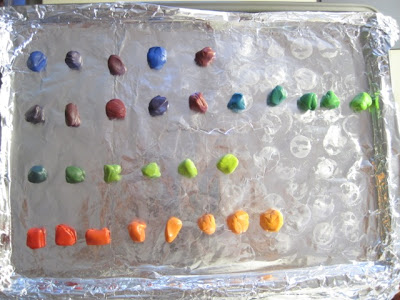Every three weeks or so, I get the urge to mix more colors and make more of the small clay tiles that I use. Sometimes I have a few specific colors in mind, but other times I pull the clay out and just start to mix things that seem interesting. These are the ones from my latest effort. The copper color in the bottom right corner is what I referred to in my previous post. It turned out pretty good. In my search for a good metallic bright orange, I seem to have made the color of carrots. Again. I think it's the 3-4th time. That's OK. Trial and error is part of the process.
I feel like I'm starting to pay more attention to color. There's a pinner on Pinterest that pins a lot of color pallets from a site called Design Seeds. I seem to repin almost everything she posts, and am not surprised that the blue-purple-green pallets are what I find really attractive. I thought I might refer to these pallets a little more often to come up with color combinations for the jewelry that I make. It seems like learning about color is like almost anything else in that the more you do it, the easier it becomes.
I think we all have a sense of what we like and what we don't care for (and what we couldn't remotely imagine using. Ever). I intend to build on that and see what happens. I've got a couple of new bracelets that I'm going to take pictures of and will get those posted here that I used the pallets and really like the results.








